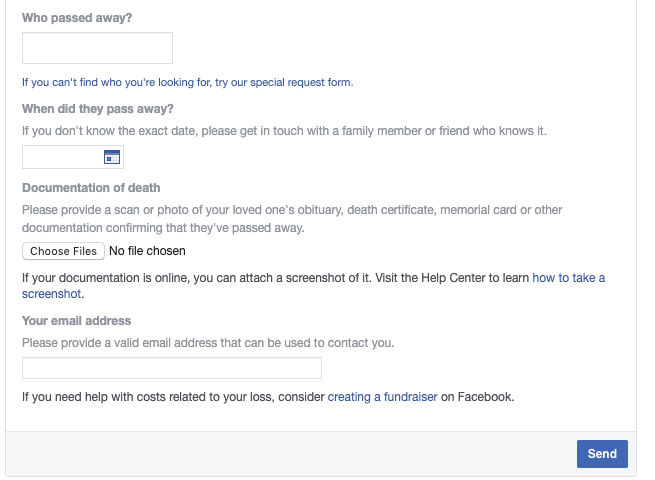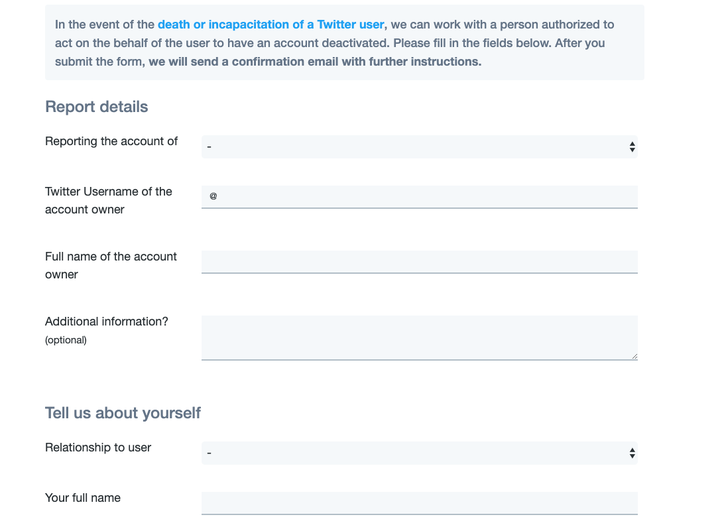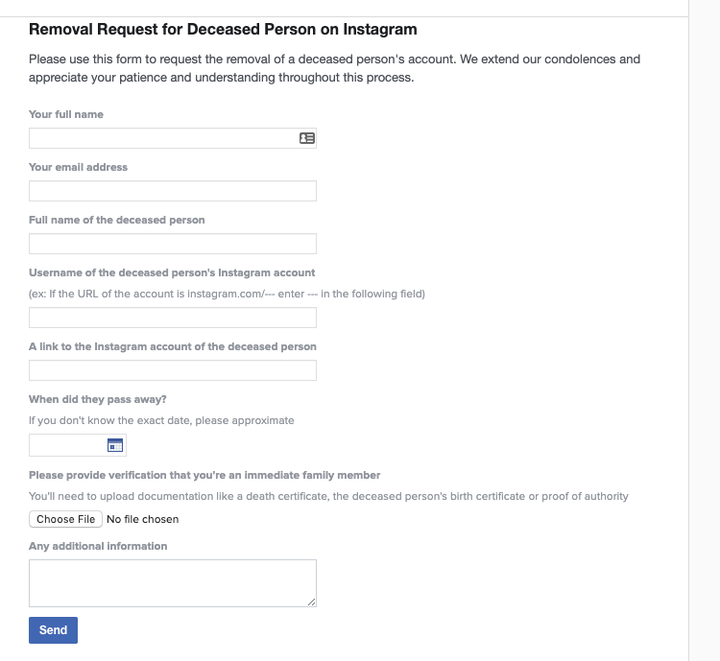When a parent dies, they may leave behind an important digital legacy. The musings, photos and videos they posted to their Facebook page are not just documents of the past, they can be lifelines you want to preserve. A parent’s social media account can become a place for loved ones to gather and mobilize.
In fact, some people spend significant amounts of time interacting with and revisiting the Facebook pages of deceased loved ones, according to 2015 research on Facebook memorials, for which the authors interviewed the people who managed these social pages. As one woman who was in charge of her late son’s page put it, “You kind of want something to touch. … I don’t want to see the grave. ... If you see the Facebook page you think, ‘Oh yeah, my son, he’s still there.’”

Here’s what you can and cannot do for your parents’ social media accounts when they’re gone.
How to contact Facebook about your parent’s account
Out of all the major social media services, only Facebook lets users make proactive choices about what will happen to their accounts after they die, enabling people to choose — at any time — whether to have their account deleted after their death or to assign a “legacy contact.”
If your parent so wishes, they can add a legacy contact by:
- Going to their Facebook settings.
- Selecting “memorialization settings.”
- Typing the name of their Facebook friend of choice and selecting “add.”
- Alerting that Facebook friend that they’ve been selected for this duty by clicking “send” (though this last step is optional).
Legacy contacts have a lot of editorial power over the deceased’s account. They can’t log in as the page’s owner, post as the owner, or read their messages, but they can address friend requests, update profile and cover photos, share a pinned post on the profile, and remove tags of the owner that someone else has posted.
If a person doesn’t make their wishes known to Facebook about what should happen with their account, “It will be memorialized if we become aware of your passing,” Facebook states. This means that the page will look different and feature the word “Remembering” next to the name on the profile. The account will not appear active by showing up in “People You May Know” modules, ads or birthday reminders. There will also be a separate Tributes section for people to share posts, while the deceased’s timeline is preserved.
After your parent dies, you can contact Facebook about memorializing their account using this form, and you will be asked to provide documentation confirming their death, such as an obituary or a death certificate.

The memorialization process is not perfect. Under Facebook’s guidelines, “once an account is memorialized, the content the person shared (example: photos, posts) remains on Facebook and is visible to the audience with whom it was shared.” That means the legacy contact may not be able to have upsetting photos removed, as highlighted by a 2017 case in which a woman’s family said that, after her account was memorialized, they were unable to take down photos of the deceased with the man who allegedly killed her.
How to contact Twitter about your parent’s account
Twitter has one limited option for what you can do with a parent’s account: request deactivation. A person who is “authorized to act on behalf of the estate” or “a verified immediate family member” can fill out a form to deactivate it. If you are acting on behalf of your parent, Twitter will ask you to provide a copy of your ID and a copy of your parent’s death certificate.

There is no memorialization option on Twitter. If you’re a family member who would like to keep your parent’s Twitter account available after death, your main option is to leave the account as is. Twitter’s guidelines state that it will not let anyone log in as the deceased, although some people have tried. In 2016, the account of late New York Times media columnist David Carr was hacked. The account was restored within hours, but it highlights how precarious a loved one’s digital afterlife can be.
Of course, if you have the opportunity, you can go beyond Twitter’s limited options by having a conversation with your loved one before they die about what they want to do with their tweets. Chaz Ebert, for example, indicated that her late husband, the film critic Roger Ebert, had given instructions for her to use his Twitter for “limited purposes as he decreed.”
One theoretical way to be proactive is for your parent to share their log-in information with you, which gives you access to their account unless another person authorized to act on their behalf asks Twitter to take it down.
How to contact Instagram about a parent’s account
Similar to Facebook, Instagram lets you memorialize an account. Unlike its parent company, though, Instagram’s memorialization process is not as extensive.
You may not even realize that the account has been memorialized because a memorialized Instagram page doesn’t appear differently from an active one. The process simply puts the account in a static state and will not let anyone make any changes to any of the “account’s existing posts or info,” including the person’s privacy settings, according to Instagram’s guidelines. That means you could comment on the deceased person’s photos if they had left their settings public for you to do so. Instagram does not allow you to take down a post the deceased person shared, even if that post is upsetting for you as a family member to see.
The main benefit of memorializing an Instagram account is that it won’t appear in jarring public places like the Explore section.
If you want to memorialize an account, you can fill out a form for which you will be asked to provide proof of death through a link to, or screenshot of, an obituary or news article.
If these options are unsatisfying, an immediate family member can ask Instagram to remove an account altogether through a different form. To prove you have a close bond with the deceased, Instagram said it will ask you to provide proof with documentation like your family member’s birth certificate, death certificate, or proof that you’re representing their estate.
